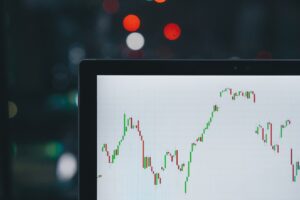How to Analyze Gold Market Trends for Forex Trading
Gold has always been considered a safe-haven asset, preferred by investors during times of uncertainty. It is often used as a hedge against inflation and currency fluctuations. As a forex trader, understanding and analyzing the trends in the gold market can provide valuable insights for making informed trading decisions. In this article, we will discuss various methods and tools to analyze gold market trends for forex trading.
1. Fundamental Analysis:
Fundamental analysis involves studying the underlying factors that influence the price of an asset. In the case of gold, there are several key factors to consider:
a) Economic Indicators: Gold prices are influenced by economic indicators such as GDP growth, inflation, interest rates, and employment data. A strong economy and low inflation may lead to lower gold prices, as investors shift towards riskier assets. Conversely, a weak economy and high inflation may drive investors towards gold, leading to higher prices.
b) Geopolitical Events: Geopolitical events such as wars, political instability, and trade disputes can significantly impact gold prices. These events create uncertainty and drive investors towards safe-haven assets like gold. Monitoring global news and geopolitical developments can help identify potential trends in the gold market.
c) Central Bank Policies: Central banks play a crucial role in shaping monetary policies that affect gold prices. Changes in interest rates, quantitative easing measures, or currency interventions can impact the value of currencies and, consequently, the price of gold. Keeping an eye on central bank announcements and policy decisions can provide insights into potential gold market trends.
2. Technical Analysis:
Technical analysis involves studying historical price data and patterns to identify potential trends and trading opportunities. Several technical indicators and chart patterns can be used to analyze the gold market:
a) Moving Averages: Moving averages smooth out price fluctuations and help identify the overall trend. Traders often use the 50-day and 200-day moving averages to identify bullish or bearish trends in the gold market. A golden cross (50-day moving average crossing above the 200-day moving average) is considered a bullish signal, while a death cross (50-day moving average crossing below the 200-day moving average) is considered bearish.
b) Support and Resistance Levels: Support and resistance levels are price levels where buying or selling pressure is likely to be significant. Identifying these levels can help traders determine potential entry and exit points. Drawing trendlines and horizontal lines on price charts can assist in identifying support and resistance levels.
c) Fibonacci Retracement: Fibonacci retracement levels are based on mathematical ratios that are believed to represent potential levels of support or resistance. Traders use these levels to identify potential price reversals or areas of interest for entering or exiting trades.
d) Candlestick Patterns: Candlestick patterns provide insights into market sentiment and potential trend reversals. Patterns such as doji, hammer, and engulfing can indicate a potential change in direction. Learning to recognize and interpret candlestick patterns can be a valuable skill for analyzing the gold market.
3. Sentiment Analysis:
Sentiment analysis involves gauging market sentiment and investor psychology to identify potential trends. There are several ways to measure sentiment in the gold market:
a) Commitment of Traders (COT) Reports: COT reports provide insights into the positions held by institutional traders, such as hedge funds and commercial banks. Analyzing these reports can help identify whether market participants are bullish or bearish on gold.
b) Market Sentiment Indicators: Various sentiment indicators, such as the Fear and Greed Index or the Volatility Index (VIX), can provide insights into overall market sentiment. High fear or volatility levels may suggest a potential increase in demand for safe-haven assets like gold.
c) News and Social Media Sentiment: Monitoring news articles, social media trends, and sentiment analysis tools can provide insights into the overall sentiment towards gold. Positive or negative sentiment can influence market trends.
In conclusion, analyzing gold market trends is essential for forex traders looking to make informed trading decisions. By combining fundamental analysis, technical analysis, and sentiment analysis, traders can gain a comprehensive understanding of the gold market. However, it is important to remember that no analysis method can guarantee accurate predictions, and risk management strategies should always be in place.





